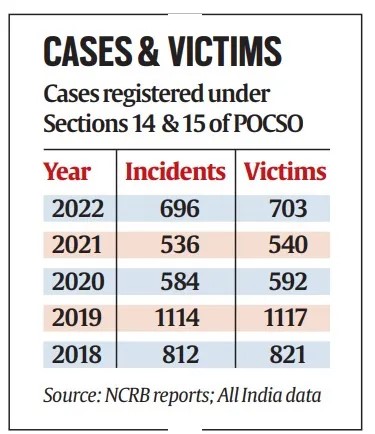7667766266
enquiry@shankarias.in
Recently Supreme Court expanded the scope of POCSO act regarding child pornography.
Section 67B of the Information Technology (IT) Act also penalises use, transmission and publication of obscene materials and browsing, creation, collection, online facilitation or enticement of children into any sexual act or conduct an offence.

Madras High Court held that mere possession or storage and watching or downloading pornographic acts involving children in private was not a crime.
An inchoate crime is a criminal act that is incomplete or not fully developed, but is punishable because it involves preparation for a further crime.